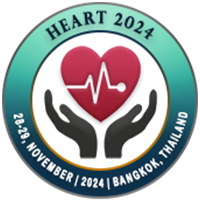
Alexander Kaledin
, North-Western State Medical University , RussiaTitle : Comparison of proximal and distal radial access for primary coronary interventions in patients with ACS
Abstract
Evaluation of the efficacy and safety of distal radial access. Study of the dependence of radial artery occlusion on the duration of endovascular intervention. 476 patients with acute coronary syndrome included in prospective single-center study. Efficiency and safety were compared between groups of patients with distal radial access (in anatomical snuffbox area (93 pts) and on the rear of the hand (72 pts)) and proximal radial access (on the forearm (311 pts)). For the assessment of efficiency, the following parameters were determined: technical failure rate of artery catheterization and frequency of access conversion, time required for artery catheterization, total time from patient admission to the cathlab to the start of manipulations on the infarct-related artery. Safety was assessed based on the occurrence of local hemorrhagic complications, pulsating hematoma, dissection, arteriovenous fistula, and radial artery occlusion.
Results. Concerning efficiency, distal radial access was not inferior compared to proximal radial access: frequency of access conversion due to puncture failure didn’t differ significantly (7.2% vs 5.8%, p=0.112), time indicators were almost the same (time of catheterization 47.4 sec vs 47.1 sec, p=0,78; “table–balloon” time 21.8±9.9 min vs 23.2±10 min, p=0,15). But distal radial access proved to be safer that proximal radial access, according to the local complications rate (hematoma III-IV 1.8% vs 6.8%, p=0,003; radial artery occlusion 0.6% vs 6.8%, p=0,001).
Conclusions. For coronary endovascular interventions in patients with acute coronary syndrome, distal radial access catheterization is a feasible and safe method with potential benefits for both patients and operators
Biography
Alexander Kaledin has completed his PHD at
the age of 44 years from North-Western State Medical University named after
I.I. Mechnikov, Russia. He works as a physician in the Department of X-ray
diagnostic and treatment methods, Russia. He has about 20 publications that
have been cited more than 40 times.

